Cynthianna's Blog, page 6
December 16, 2015
Book Review--Two for the Lions
 Two for the Lions by Lindsey Davis
Two for the Lions by Lindsey DavisMy rating: 4 of 5 stars
It's been a while since I last read a Falco mystery, and Two for the Lions is a good one to pick up the general storyline and characters again. Marcus Didius Falco finds himself involved in a murder--albeit it's a dead lion found in a gladiator's menagerie--while doing another "dirty job" for the emperor, that of census auditor looking for lost tax revenue. He's partnered with his former nemesis, too, Anacrites the former chief spy. To make matters worse, Vespasian won't even pay him what he's owed for doing the work as promised from auditing Calliopus and Saturninus, the two most vengeful gladiator managers imaginable.
When the gladiator Rumex is found murdered right under their noses, and the clues lead no where, Marcus has had enough. He and Helena take their baby daughter and go looking for Helena's runaway brother Justinus and his girlfriend Claudia. They two young lovers have been looking for a rare herb that could make them all rich and is only found in Cyrenaica. Once in north Africa, Marcus meets up with the two warring gladiator managers and a third, Hanno, along with the grieved Scilla, a woman who seems to know how to play the game better than any of them.
An enjoyable read from beginning to end, my only complaint is that it just "ends" after a climactic gladiatorial contest, and I don't know what's become of Helena and the others. Oh, well, I guess I'll just have to read the next book in the series and find out!
View all my reviews
Published on December 16, 2015 14:48
December 7, 2015
Retconning the Doctor (on New Doctor Who)
 Retconning the Doctorby Cynthianna
Retconning the Doctorby Cynthianna***Spoiler Alert!***
"Am I supposed to understand anything you're saying?" -- Clara in the Matrix on Gallifrey
Take all the cool and interesting things that a multitude of writers have created for Doctor Who since its inception--the Time Lords, Gallifrey, the TARDIS, time travel, the Matrix, the cloister bells, those odd cardinal-like robes and funky head/shoulder gear the bigwigs wear--toss into a big pot, forget all about series canon, and stir. Upturn pot and pour out onto the page. Ta-da! You have the season finale, Hell Bent.
Of course, since this is Moffat's Who script you have to add in his creations--Clara and Ashildr (Me)--and plenty of creepy bits of his Blinking Angels and a Dalek stuck in a haunted-house-like data collection device known as the Matrix. (Google the Tom Baker episode The Deadly Assassin to see how different the original Matrix on Gallifrey is from this new incarnation. Yeah, it's that different!) There are some funny bits tossed in as well, such as Time Lords now regenerate without much of a hangover, changing gender/age/race simultaneously. Tack on a relatively satisfactory ending after a lot of head scratching and feet dragging. Ta-da!
This time it's the Doctor who gets the mind wipe and not the companion (see Donna Noble) so he can move on. The undead Clara gets to have some "girlfriend time" with Ashildr in their own fifties diner-shaped TARDIS with a pure-white classic interior. How either of these young ladies know how to pilot a TARDIS isn't explained. Neither is the previous "rule" given that only a Time Lord could manage a TARDIS because of their psychic link.
Is it good to violate the TV series canon? Nah, who cares! Nobody will notice.
Even for new Whovians who haven't a clue that Leela lives somewhere on Gallifrey, this "word salad" of a script seems to be missing something vital: emotional connection. Even with a script jumping all over the place like a hyperactive kid on a Christmas candy rush, you'd think it would be able to settle down long enough for the characters to connect with their audience. But therein lies its weakness: the emotions are telegraphed for you.
 You don't have to think or feel for yourself when you're told pretty much what is going to happen up front, similar to what happened in an earlier episode this season. (See my review for Before the Flood.) You know that Clara is going to "live" again, and the Doctor is going to forget all about her since we start out in a scene at the diner where this is made painfully obvious. I suspect the current show runner feels he has to spell everything out because he believes Doctor Who's viewers have IQs to match their shoe sizes, and we all have tiny feet.
You don't have to think or feel for yourself when you're told pretty much what is going to happen up front, similar to what happened in an earlier episode this season. (See my review for Before the Flood.) You know that Clara is going to "live" again, and the Doctor is going to forget all about her since we start out in a scene at the diner where this is made painfully obvious. I suspect the current show runner feels he has to spell everything out because he believes Doctor Who's viewers have IQs to match their shoe sizes, and we all have tiny feet.I think my husband, a long time Whovian, said it best: "The show has gone from good scripts and wobbly sets to good sets and wobbly scripts."
All the lovely photography, location shoots, costuming, special effects, musical score, etc., do not a strong story make. (Just ask George Lucas.) Not even a classic character like the Doctor can withstand all the retconning that's happened to him in the Moffat era and come out for the better. He's been diminished somehow, made into a permanent fool, a pale shadow of the strong action character he used to be.
Peter Capaldi reminds me of Pierce Brosnan when he finally got the part of James Bond after many years. Pierce made a great Bond, but unfortunately he got stuck with the weak scripts of that period and left early. If only the great writer Robert Holmes was around to give Peter's Doctor the shot in the arm he so badly needs after this season. A great actor like Peter Capaldi deserves the best!
We have the Christmas special with River Song to look forward to in a couple of weeks, and it appears to be a comical tale. That's good. After all the forced drama and tears of the Clara years, it'll be nice to see the Doctor relax and enjoy himself a bit with a mad romp. Fingers crossed!
What do you think? Please leave your comments below, and check out my reviews of earlier episodes of this season of Doctor Who:
Heaven Sent
Face the Raven
Sleep No More
The Zygon Inversion (or Inversion of the Zygons)
The Zygon Invasion
The Woman Who Lived
The Girl Who Died
Before the Flood
Under the Lake
The Witch's Familiar
The Magician's Apprentice Classic Who on Retro TV
Published on December 07, 2015 09:24
November 30, 2015
Waiting for Godot with the Doctor (On New Doctor Who)
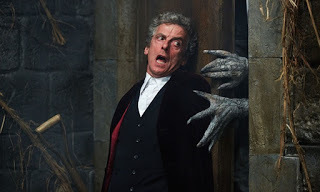 Waiting for Godot with the Doctorby Cynthianna
Waiting for Godot with the Doctorby Cynthianna ***Spoiler Alert!***
Heaven Sent is mistitled. Moffat obviously hasn't done his research into Roman Catholic tradition. His story is set in Purgatory, the place between life on Earth and eternal life in Heaven, and the Doctor is being punished for his sins, or at least he's being tortured until he makes a confession. Of course, we won't know who is doing the punishing until the very last scene, so let's hope his torture chamber is at least an interesting place to spend an hour, right?
Alas, this simply isn't the case. With a beautiful setting of a Baltic-styled castle that can rotate its rooms and floors about like a gear-work clock and the dapper Peter Capaldi--dressed elegantly once again without the black hoodie under the velvet jacket--you'd think you could spend an hour gazing into the Doctor's handsome face easily and not grow bored. How I wish I could say this was true. The predictability of the inevitable ending only brought back memories of boring theater coursework in college and being forced to sit through a performance of Waiting for Godot. If you've never seen the play, don't worry. You have much better things to do with your time.
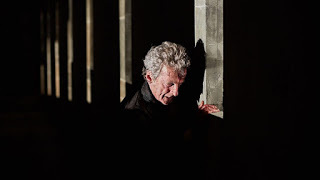
So, we have a Time Lord all by himself who can "live forever" taking an eternity to figure out what needs to be done to get out of his own personal hell--designed with his childhood phobias in mind. As a short story, the premise might have had more punch, but as an hour-long television program the energy lagged almost from the start. The over-orchestrated soundtrack gave an early clue to the story's weaknesses of pacing and tension. The music seemed to say, "Stay awake! This is supposed to be exciting!" But how exciting can something be if you have to be hit over the head with loud music and told that it is?
The entire season seems devoid of emotional connection that one felt in the RTD days. (Who didn't cry when Donna Noble had to have her memory of the Doctor blanked?) Heaven Sent comes across more like a video game with the Doctor being your "first person shooter" as he goes from room to room or level to level. When your shooter "dies" of course you can always continue on with the game--you have more "lives" saved up, right? Dramatic tension is pretty much not expected or needed in video games, and if you get stuck on a level oftentimes you can hit a button to give you verbal or printed helpful hints to help you get to the next level. Sound familiar? (The faceless Clara at the chalkboard is playing the hints giver.)
So, like a video game, I give points for the lovely photography and intriguing sets, and points to the gorgeously photographed Peter Capaldi as the Doctor who gives it his all, but not many points to a weak script lacking in emotional resonance. Last season gave us the stronger scripts of Flatline, Mummy on the Orient Express and even the enjoyable frivolity of Robots of Sherwood. This year we're stuck with the dust in which the Doctor scribbles clues to himself in his haunted castle. Let's hope the season finale isn't any drier.
What do you think? Please leave your comments below, and check out my reviews of earlier episodes of this season of Doctor Who:
Sleep No More
The Zygon Inversion (or Inversion of the Zygons)
The Zygon Invasion
The Woman Who Lived
The Girl Who Died
Before the Flood
Under the Lake
The Witch's Familiar
The Magician's Apprentice
Classic Who on Retro TV
Published on November 30, 2015 13:47
November 25, 2015
Inconsistencies in Tone (in New Doctor Who)
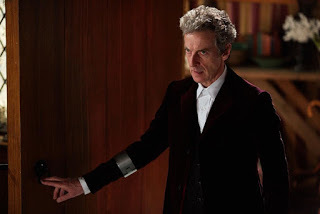
Inconsistencies in Tone (in New Doctor Who) by Cynthianna
***Spoiler Alert!***
Face the Raven is presented as a "swan song" for the character of Clara Oswald, without the pay-off of being one. There is a genuinely interesting mystery happening at the first and it sucks the Doctor and us in immediately. Rigsy (a nice young man from last year's strongly written episode Flatline) is now grown up and a daddy to a adorable baby girl. Unfortunately, he's missing an entire day from his memory and discovers a macabre tattoo that act like a bomb countdown on the back of his neck. He, of course, contacts the Doctor for help.
After all, that's what characters do on Doctor Who--they look to the Doctor for solutions to their problems. Right?
The Doctor, Clara and Rigsy trace Rigsy's last known whereabouts before his amnesia kicked in and discover all isn't as it appears. The "alien refugee camp" hidden in plain sight in the middle of London is very cool setting, and the rag-tag lot of aliens who dwell in its Tudor-like maze of shops are all visualized nicely. Once again, the Doctor encounters the immortal Viking girl Ashildr (Madame Me) and finds she's been doing the dirty work for some unknown villains. The script has a creepy Edgar Allen Poe feel to it up to this point, and it comes complete with ravens that punish capital offenders by stealing their lives away. (Quoth the raven: Nevermore!)
The acting is good, the costuming inventive. The horror set-up seems to be working well--but then everything goes off the rails with a seemingly tacked on "death scene." It just doesn't fit the tone of the rest of the story. In classic Doctor Who, the Doctor solves the mystery and saves the day and rights wrong, but in this tale he just steps back and allows the "Impossible Girl" Clara to die because she's foolishly traded places with Rigsy and taken his "killer tattoo" as her own.
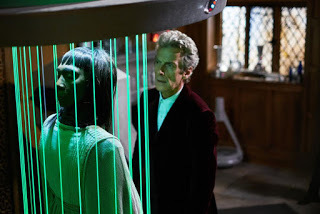 What's a stasis chamber for?
What's a stasis chamber for?What about sticking countdown Clara into the stasis chamber standing which held the apparently dead Janus woman who Rigsy was accused of murdering? What about hopping into the TARDIS and going back in time to stop Clara from acting foolishly or to put her into another stasis-type situation to stop the clock? What about implanting an immortality chip into Clara, the chip Doctor gave to Ashildr to prevent her from dying earlier this season? There are no good explanations for the Doctor's passivity in the situation given other than we're suppose to see Clara die.
As I recall, the Doctor saw Clara as an old woman in the future in the 2014 Christmas special, but she's not going to live this long now because...? In the 50th Anniversary special year, Clara was shown to have lived throughout the Doctor's twelve (thirteen) lives, being there since the day he stole the TARDIS. She seems immortal as Ashildr. She's been a girl in the future (turned into a Dalek), and she's been a Victorian-era nanny (who also died). But now we the viewers are to take it that Clara is finally dead and gone because they needed to write Jenna Coleman out of the series. That's the only explanation that works really.
The inconsistencies in tone in the new Who series are troublesome. At least the fifth Doctor's companion Adric was written out in a very noble way--he blew up when the spaceship crashed into Earth, saving the lives of others, and there was no logical sci-fi way to bring Adric back after the ship crashed. But Clara Oswald--love her or leave her--has been given a "rebirth" several times in the Moffat era. We're suppose to think she's used up all her nine lives now?
Nope, doesn't make sense really. So, I suspect we'll see Clara again soon in some other incarnation. It would make the most sense in a fantasy universe, after all, one where heroes have held the power over of life and death on numerous occasions. Or we won't see her again. She's finally as dead as her late boyfriend Danny is, who may or may not be dead, either, if he's a Cyberman.
Confused? I know I am! Inconsistent plot points abound. Why didn't the script editor check the "series bible" to make sure they all added up?
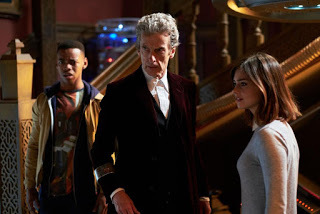
The teen-angst, soap opera tone of Clara's drawn-out death scene brings the entire episode down and ruined the first part of it for me. I like science fiction/fantasy adventure because the heroes usually can change the laws of time, physics and life/death itself so the viewers can enjoy a satisfying ending. Sure, the "logic" is made up at times (since we've yet to discover time travelers or travel faster than the speed of light) but at least it's consistent within its own fantasy universe rules. And usually the Doctor's companions have left the TARDIS alive and on their own terms--for instance, Barbara and Ian, Jo Grant, Romana, and Martha Jones.
If the character of the Doctor has the knowledge of time travel and advanced science, then of course he can save Clara by sticking her in a stasis chamber conveniently located in the same room she's standing in when she's "dying." He's not an idiot, is he? But once again, in Face the Raven inconsistencies strike. Clara is no longer the "Impossible Girl" and the Doctor is not quite as clever as one would expect him to be in the situation.
I see why my British husband has stopped watching the new series altogether. He started watching the show when the first Doctor, William Hartnell, was on the air. The charm of the sci-fi/fantasy adventure has been bled away and replaced with dreary inconsistencies of a daytime drama. What could have been an interesting mystery story full of fascinating alien creatures languishes in the end with a downer demise of a controversial character who was never quite one thing or the other. The hero has become yet another soap opera character battered in the seas of angst, unable to engage his brain and come up with a solution when a challenges arises before the next commercial break.
It all leaves a bad taste in your mouth. Oh, well, perhaps when we hear the news the series is being moved to a daytime slot (next to the other soap operas) it won't hit us quite so hard.
Published on November 25, 2015 15:12
November 21, 2015
More Style Over Substance (on new Doctor Who)
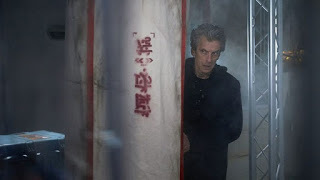
More Style Over Substance (on new Doctor Who) by Cynthianna
***Spoiler alert!***
We were out of town this past week, so we didn't get a chance to catch Mark Gatiss' episode Sleep No More until now, so this will be a very short review. One word of caution: if you are looking for images or information about the episode on Google, you'll come across an apparently adult off-Broadway play by the same name. It's definitely not something you'll want your kids to come across.
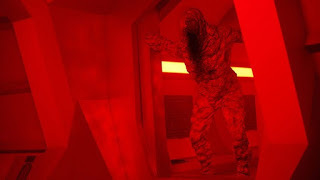
The Blair Witch or "found footage" set-up and the Agatha Christie's Ten Little Indians story line aren't anything new, but the nasty "Sandmen" monsters are pretty cool and the creepy space station is a fun "video game-like" set. Gatiss knows his monsters, and these are the new rivals in scariness for the Weeping Angels, in my opinion. Peter Capaldi plays the Doctor heroically and mugs it straight to the camera with Colin Baker's intensity along with the mania of Tom Baker's Doctor. Plus, there are lots of nice camera shots for those of us who really enjoy gazing upon Peter's handsome visage. (Sigh!)
With a nasty monster and with such great footage of Peter Capaldi, one would hope to find this episode a bit more memorable, but it seems to play it by the book and doesn't really venture into any realm of science fiction that hasn't been done before and done well. Probably its saving grace is that Gatiss didn't try to expand the little actual material he had and make it into two episodes. Short and sweet and simplistic, lacking in sophistication or subtlety, the story comes across a bit disjointed at times without any apparent reason behind the logic gaps other than poor script editing. It's a style of writing which seems to be commonplace in the Moffat era and what my author husband has named "The A.D.D. School of New Doctor Who Writing" and why he no longer cares to watch it recently.
Thank heavens Retro-TV is still showing the classic series so he can get his fix. The Jon Pertwee series wound up this past week and Tom Baker's mostly well-written series are awaiting us over the holiday season. A very nice Christmas gift indeed.
Published on November 21, 2015 12:03
November 10, 2015
Five Mistakes to Avoid in Your Novel...
Published on November 10, 2015 12:42
November 9, 2015
Telling Not Showing (on New Doctor Who)
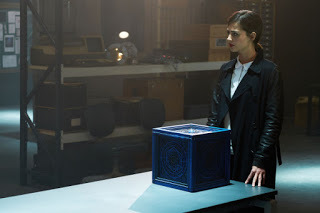 Obviously, the excitement is killing evil Clara. Not.
Obviously, the excitement is killing evil Clara. Not.Telling not Showing (on new Doctor Who)
By Cynthianna
***Spoiler Alert!***
If you’ve ever taken a writing course, I know you’ll recognize this maxim: Show not tell!
What does this mean to the average person who isn’t a writer or even interested in learning how to write well? Essentially it means what it says—you never tella story by listing dry facts or endless narration telling the reader/viewer what to think, what is happening, what to feel. Instead, the effective writer showsthe story’s characters in motion (in a manner appealing to the senses) and that action imparts the story to the reader/viewer. Face it, it’s more exciting to experience a scene when we see and almost feel something happening where the stakes are high than to simply be told what’s going to happen to the characters if they don’t do such-and-such.
The Zygon Inversion or Inversion of the Zygons (depending on which site you look for pictures for it) gives us a good example of tell not show which my college screenplay writing professor would have given failing marks. After last week’s episode, it’s a true non-event. Sure, we get to see “evil Clara” looking smart with heavier make-up and her hair pulled back, but essentially all she does is walk around, shoot an airplane, stares at the “sleeping Clara” in the pod, zaps one Zygon to turn him “inside out” and…that’s about it. No particularly exotic locations, no big action scenes, no exciting complications of plot. She does her bit as she’s told and very little else.
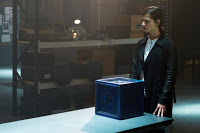
The last act consists of a lot of talking in a room at UNIT headquarters where evil Clara and Kate Lethbridge-Stewart face off by staring across a table at each other with their hands hovering over a couple of boxes while the Doctor pontificates for several minutes too long. (Kate miraculously survives her journey home from New Mexico we learn, but, of course, the excitement of her escape takes place off stage. Sigh!) Staring across a table in a dimly lit room—that’s the extent of the climactic action. No huge battles involving the sucker-covered aliens and the brave fighting men and women of UNIT. Nada.
Now, picture this—literally picture this in your mind. What if, instead of having the Doctor harangue evil Clara and Ms. Lethbridge-Stewart for fifteen minutes, he took them in his TARDIS and showedthem what life would be like if they started an inter-species war on Earth? He could show them the devastation of another similar world’s conflict or take them backward or forward in time and show them Earth after a devastating war. There could be explosions and battles and lots of colorful images and provocative sounds and smells and other appeals to both the viewers’ and the characters’ senses. Think how well this sort of sense-filled demonstration would illustrate his point without the need for long-winded speeches. Think how exciting this would be for the viewers! (It might have been fun for the actors to perform, too.)
Even the devil showed Jesus from atop the mountain all the riches, the kingdoms and power he’d have if he’d do as the devil asked instead of what God asked. The devil tempted Jesus with food when he was starving, appealing to his senses of smell and taste. Matthew 4:1-11 is a very visceralBible story, and it makes a lasting impact precisely because it appeals to the senses. Would Jesus passing up all that power, wealth and food have made the same impact on the reader if the devil had simply told Jesus what all he was passing on and hadn’t given Jesus the chance to see and experience what all he was missing? When you experience something it’s much harder to give it up, right? Obviously, the writer Matthew knew this and didn’t let up on the appeal to the senses or action.
I know I looked at the time more than once while the Doctor scolded evil Clara and Lethbridge-Stewart and delivered a diatribe on how naughty they were. I kept wondering how and when an action sequence was going to fit in. After all, in a science fiction adventure television series viewers expect to experience some excitement and action around every corner, especially at the climax. Unfortunately, this episode was “pear shaped” and had no corners to turn.
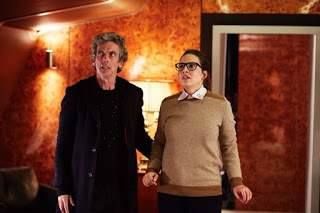
No big battles of Zygons vs. humans, instead we were treated to another “Osgood” in the seventh Doctor’s famous question mark knitwear. Cute in a stereotypically nerd girl way. I think Osgood would make a great companion some day, but only if she actually does something active instead of function merely as a model to push sales of classic Who DVDs to the younger crowd.
Of course, how well she and other characters function is up to the series’ writers and script editor. Let’s hope they hit the books and study up on how write a stronger script next time.
What do you think? Please leave your comments below. And check out my reviews of earlier episodes of this season of Doctor Who:
The Zygon Invasion
The Woman Who Lived The Girl Who Died
Before the Flood Under the Lake The Witch's Familiar The Magician's Apprentice Classic Who on Retro TV
Published on November 09, 2015 12:03
November 2, 2015
Resurrecting a Classic Who Monster (on New Doctor Who)
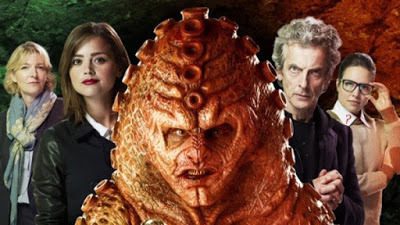
Resurrecting a Classic Monster (on New Doctor Who)by Cynthianna
***Spoiler Alert!***
You gotta love those suckers! I’ve been a big Zygon fan since the early days, so I had great expectations for The Zygon Invasion. Fortunately, some of those expectations were delivered.
The Zygons have not gone through a “make-over” for the hundredth time like the Cybermen—and for this I’m glad. How can you improve upon a ruddy, sucker-studded, walking-squid-like humanoid creature which can act like a chameleon and become any person you know and trust? You can’t really, can you? They are Doctor Who monster perfection at its finest.
But you can change their back story a bit, and for this I’m not quite as pleased. The intrepid Osgood in her Classic Who accessories is dead—she was sucked out of an airplane at 30,000 feet. We weren’t very happy about that bit of wanton cruelty in last season’s episode, and apparently the fans got very vocal and protested her treatment to the BBC. Lo and behold, Osgood’s alive! Or is she? Zygons in classic Who could only change themselves to look like a living human, so is this Osgood the Doctor meets the real thing? She won’t say, but she hints that Zygons aren’t limited by keeping their originals alive to copy anymore, and they are all hybrids now. Hmm, if you take away their Achilles’ heel, you sort of take away the best way the Doctor can conquer them. Perhaps not such a good plotting choice in the dramatic sense, but we’ll see in part two.
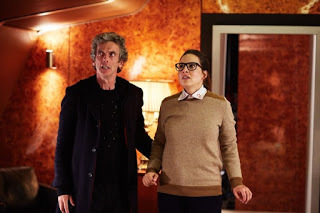
The locales this time out are a breath of fresh (desert) air: a fictional ex-Soviet central Asian republic and Truth-or-Consequences, New Mexico? Well, if you lived in a dryer part of the world (like I have), you’d probably want to get out and invade the planet eventually, too. So, good marks for settings outside of London, but bad marks for sending the Brigadier’s daughter out on her own. Uh, it’s called “back up." We both couldn’t visualize the Brig ever going anywhere far away from UNIT headquarters without at least his two right hand people—Sergeant Benton and Captain Yates—to watch his back. But Ms. Lethbridge-Stewart doesn’t seem to have much training in tactics, so she goes off to New Mexico alonewhere, of course, she’s going to be captured by the Zygons. Doh! With all these good women, and all the main UNIT positions are now filled with females, you'd think she could have had picked the cream of the crop to come along with her? (How progressive the U.N. has become! Or are all these actresses cast as intelligent, authority figures to make up for the less-than-feminist characters Moffat has been accused of writing in previous episodes?)
The idea that the Zygons numbered twenty million (whew!) and were allowed to stay on Earth after their last run-in with humanity seems a bit far-fetched as well. Twenty million? Uh, if countries in Europe are currently having conniptions over thousands of refugees pouring across their borders, then how do you think twenty million aliens would be handled and kept quiet throughout the world? Not very well! This logic gap is bigger than the Grand Canyon (to stay with the desert analogies) and needs filling in the second part.
Clara acts particularly acerbic in this episode, and it is revealed at the close why her behavior has been “off." One wonders if this hasn’t been the reason why she’s seemed disconnected from her emotions in earlier episodes, or if this was just tossed in to explain her actions in this particular episode. Either way, a countdown seems to have started for her character. Is her final departure nigh?
Peter Capaldi’s performance is spot on again with his Tom Baker-like Doctor. He’s mischievous yet involved, cautious yet not afraid to take action. The way the story opens, we’re not sure what his relationship with Clara is since she’s not there—she’s not a “Sarah Jane” who lives in the TARDIS between adventures. He’s more of a David Tennant-loner type of Doctor who comes and goes more than stays all the time with his companion. Possibly this is the reason behind his dark character? But why take the airplane when you have a TARDIS, Doctor? Surely you remembered what happened on board to Osgood last time?
Over all, The Zygon Invasion is an enjoyable adventure with a few niggling plot points that don’t take away from its overall entertainment value. We can't wait to see what those sucker-critters get up to next week.
What do you think? Please leave your comments below. And check out my reviews of earlier episodes of this season of Doctor Who:
The Woman Who Lived The Girl Who Died
Before the Flood Under the Lake The Witch's Familiar The Magician's Apprentice Classic Who on Retro TV
Published on November 02, 2015 18:33
October 26, 2015
The Story That Gives (More on New Doctor Who)
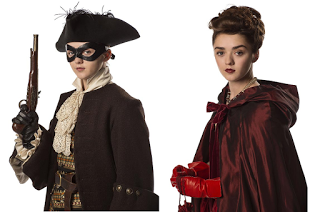
The Story That Gives (More on New Doctor Who) by Cynthianna
***Spoiler Alert!*** At last! Finally, fans are treated to a story this season which actually dares to explore the complexity of character within a science fiction format. Well done screenplay author Catherine Tregenna and director Ed Bazalgette!
With the set-up story to The Woman Who Lived being a bit on the uneven side, our hopes for the sequel showing what became of the young Viking girl, Ashildr, weren’t all that great. However, we were pleasantly surprised to find a tale about the meaning of immortality and how tedious life must be for a human being forced to live one day at a time for over 800 years while everyone and everything around her fades away.
While the Doctor represents a long-lived (but probably not immortal) character who is able to bounce about space and time at will, “Me” (as Ashildr renames herself) is forced to live one day at a time and limited by primitive technology to staying put in medieval times and then finally in Cromwell’s England of the 1650s when she encounters the Doctor again. Is it any wonder she’s taken to being a highwayman for the cheap thrills to lighten her otherwise dreary existence?

But the story doesn’t stop simply there at Me’s superficial existence as a robber—no, it actually treats the viewers as thinking individuals and gives us more. Much more. The Doctor scans her journals of 800 years and learns just how much the Viking woman has suffered as she’s loved and lost and loved and lost over and over again. We understand how painful it is for her to lose her children to the plague, as she is able to survive it while her family about her dies a horrible death. This is what good science fiction is—it’s about showing character and suffering, wonder and hope. It’s not just about piling on the special effects or the monster costumes or dumping sometimes puerile, sometimes nasty non sequiturs into the script just for laughs. Science fiction is at its best when it’s used to demonstrate what it means to be human, even when the characters aren’t quite “human” themselves.
There are a few weaknesses in the production, but the strength of the acting and story itself more than offset them, as was often the case in the classic series. After all, how many fire-breathing “lions” have you ever seen? (We wondered why the alien couldn’t have been a fire-breathing dragon-like humanoid, instead of a Beauty and the Beastclone.) How can a petite woman sound like a baritone highwayman without access to more advanced technology to alter her voice? And, if Ashildr/Me has an alien chip that could have made at least one of her lovers or her children immortal, why hasn’t she used it before now? (Is it because she sees immortality as a curse but can't bring herself to destroy herself?) Stronger reasoning here would have been appreciated and possibly given us some more insight into the immortal woman’s character and motivations.
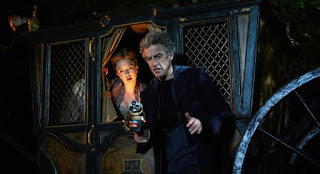 Still, overall, the costuming and sets are well done and give the viewer a great feel for mid-17th century England. The acting by Peter Capaldi and Maisie Williams is superb. We never doubt Me’s inner torment for a second or the Doctor’s growing concern that perhaps he’s done the wrong thing by helping this young woman live as an immortal. In fact, she makes it obvious later that “friends” can sometime be more dangerous than enemies.
Still, overall, the costuming and sets are well done and give the viewer a great feel for mid-17th century England. The acting by Peter Capaldi and Maisie Williams is superb. We never doubt Me’s inner torment for a second or the Doctor’s growing concern that perhaps he’s done the wrong thing by helping this young woman live as an immortal. In fact, she makes it obvious later that “friends” can sometime be more dangerous than enemies. As a “Clara light” episode, The Woman Who Lived gives the audience some hope that perhaps better things are yet to come for Capaldi’s Doctor, that perhaps we won’t have to wait 800 years for another decent episode in which he can shine.
What do you think? Please leave your comments below. And check out my reviews of earlier episodes of this season of Doctor Who: The Girl Who Died
Before the Flood Under the Lake The Witch's Familiar The Magician's Apprentice Classic Who on Retro TV
Published on October 26, 2015 13:53
October 18, 2015
The Story That Tried (on New Doctor Who)

The Story That Triedby Cynthianna***Spoiler Alert!***
Hey, Vikings! It's been fifty years since we last seen them on Doctor Who, so Jamie Mathieson's script idea was a welcome breath of fresh air we thought. We loved his last season's scripts for Mummy on the Orient Express and Flatline, both which are possibly the best written episodes in several years. Then we caught the co-writer's name--Steven Moffat, the show's producer who seemingly feels compelled to write or re-write every episode. Oh, well... maybe Jamie's magic will outshine any alterations Mr. Moffat makes to the story?
When people write together as a professional writing team, the reader/viewer usually can't tell where one author starts writing and then stops and his or her partner begins writing. (For instance, my husband and I just recently sold a jointly-authored Y.A. sci-fi novel series--more news to come!) Alas, there were several things that jumped off the screen in The Girl Who Died that just didn't seem to mesh as well with the overall writing-style. I suppose these rough bits were Moffat's additions? The first thing that really jarred was the title itself. Like last week's introductory scene, where the Doctor explains the entire story premise upfront, the title sort of gave away the "big secret" that a girl was going to die. Since it probably wasn't going to be the companion character, that left Ashildr, the Viking girl who helps the Doctor and Clara. Talk about killing all the mystery and tension!
The Vikings had a lovely village set, and it was great to see the Doctor materialize in another place rather than contemporary London or Wales again. Since the Vikings ruled an area from North America to Russia and south to Turkey, the village could have been anywhere within their realm. However, one thing jumped out that shouldn't have been there: the horns on the helmets.

According to my daughter, who attended graduate school in archaeology at the University of Southern Denmark and is a professional Viking re-enactor in Europe, Vikings warriors never wore helmets with those big longhorns on the top. That's a fallacy perpetually kept alive by Bugs Bunny's famous What's Opera, Doc? and Asterix and Obelix comic strips. Take it from me, they just didn't, and my daughter can provide the historic proof to back it up. Also, the modern belt buckle I spotted on Ashildr's costume (why was she wearing pants and not skirts like Viking women usually did?) wasn't found in that time period, either. Vikings used beautifully forged decorative pins to hold their clothes together in the places that weren't tied or sewn together. One would hope the BBC costume department had enough of a budget to call an expert in Viking clothing to double-check these things, but perhaps Mr. Moffat thought such anachronisms funny?
The "Mire" villains reminded us of Sontarans or the Judoon from previous seasons. "Odin" looked like the pirate captain in the Douglas Adams' script The Pirate Planet in the Key to Time series during the Tom Baker years, too. The Doctor's odd nasty remark that "God never makes an appearance" (like he does in Monty Python and the Holy Grail) to explain the appearance of the aliens to the Viking villagers sounded more like an atheist's complaint than something the character of the Doctor would say, as he generally respects other cultures. Once again, it sounded like an addition made by another writer with an ax to grind--Mr. Moffat, by chance?
Peter Capaldi seemed to be channeling bits of Tom Baker--along with Patrick Troughton and Jon Pertwee--in his performance. His Troughton-like plaid trousers looked a bit out of place with his "'90s grunge band look" hoodie and t-shirt under the jacket. Last year's more sophisticated style of dressing seemed to suit him better than the uber-casual teenage boy look he's sporting this season.
The Doctor's more warmhearted approach (he actually hugs Clara without prompting) is a nice touch this time out, but his unusual decision to re-animate "the girl who died" seemed completely out of character for him. The Doctor usually insists that the time line shouldn't be altered for anyone and that death is final. (If it isn't, why has he not gone back to save his companion Adric who died during his fifth incarnation?) One suspects neither the girl's death nor her resurrection was included in the original story idea Mr. Mathieson pitched, and that it was added to give a guest appearance slot to Maisie Williams for two episodes as a ratings gimmick.
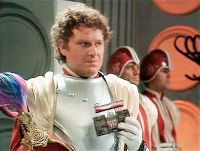
The "reason" for the Doctor changing his mind about bringing her back to life came across as an weak attempt to appease fans. Some must be dying to know why the Doctor looks very much like the Roman father from the 2008 Fires of Pompeii episode, but it seemed contrived. After all, Colin Baker appeared in the fifth Doctor episode Arc of Infinity as Maxil, a Gallifreyan guard, and we were never given an explanation for why the sixth Doctor had Maxil's face, and the audience handled it just fine. Yet another example of an alteration made to Mathieson's original script?
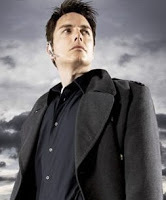
We're given hints that poor Ashildr is now immortal, and she's going to hate it and go insane since she will outlive all her loved ones. It makes sense, but then again, Captain Jack Harkness is also an immortal Doctor Who character who hasn't gone insane, and he's outlived everyone and died horribly numerous times to boot. (He just keeps coming back no matter how many little pieces he's pulverized into, poor man!) Why is Ashildr different? And does this mean that Jack has a chance to come back on the show to help a fellow immortal cope with the meaning of her existence? Captain Jack fans are anxious to know!
Over all, The Girl Who Died seemed like one long set-up for its second part/sequel next week. If some of the "additions" to the script had been left out, and the story focused more on the Doctor and the other characters, perhaps it would have been stronger. So far this season's writing hasn't lived up to the quality of last season's non-Moffat written episodes--not including the dreadful Moon/Dragon's Egg "worse episode ever" as it's been called. (We suspected it had been written by Moffat as well.) If Jamie Mathieson is allowed to write for Doctor Who without a "co-writer" tampering with his story ideas, perhaps the writing will improve.
Or not. Let's hope they keep trying.
Published on October 18, 2015 19:44




